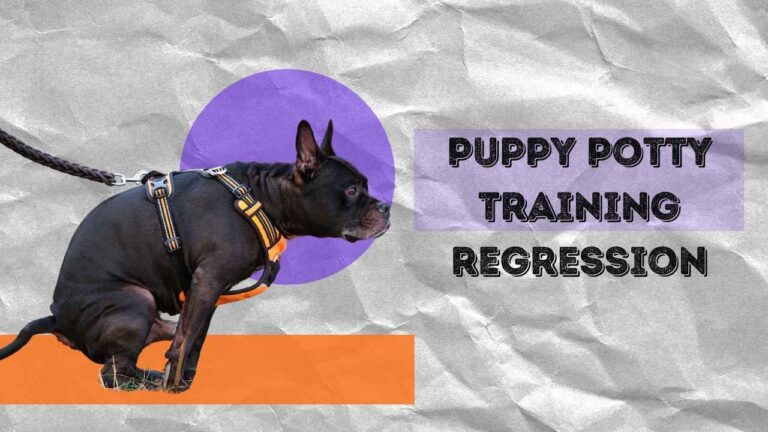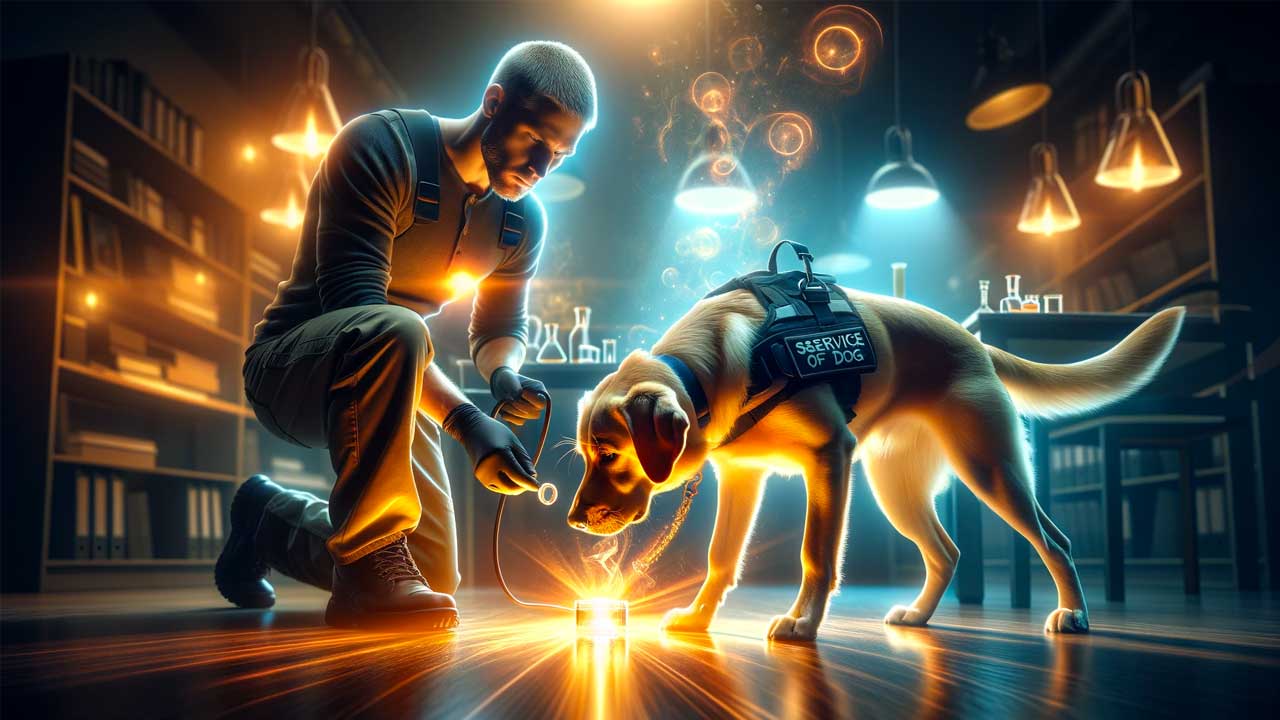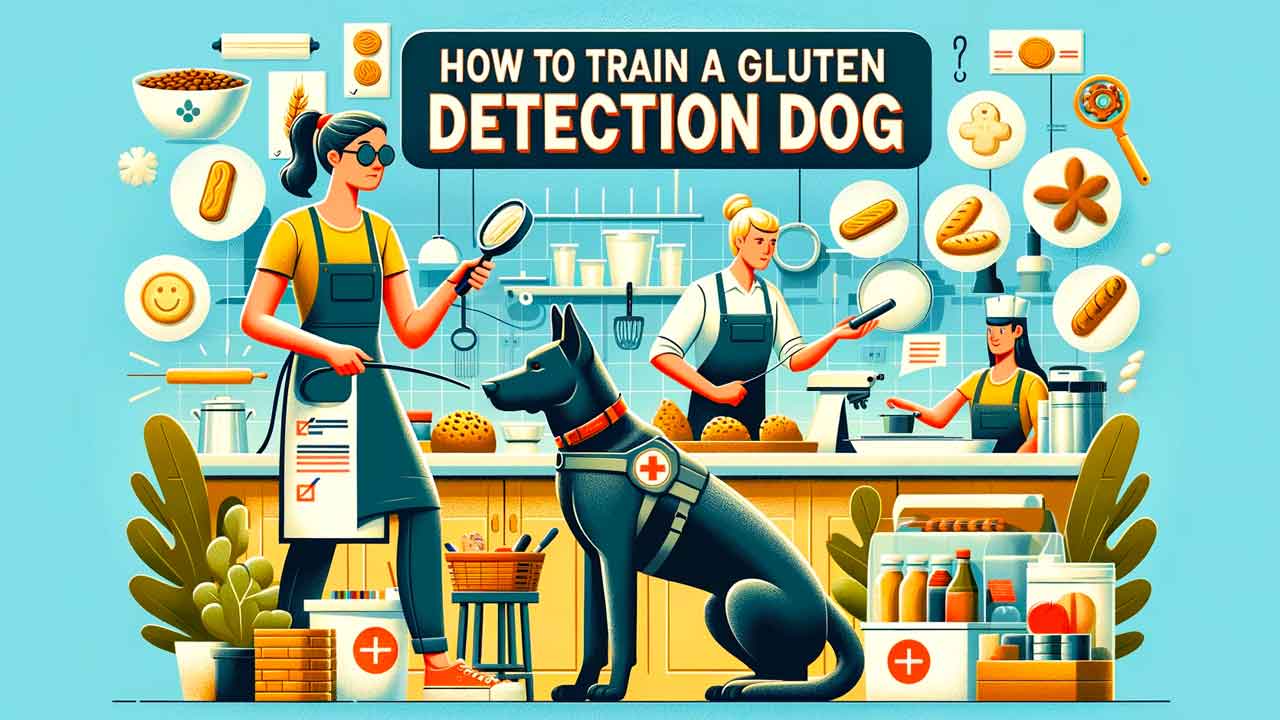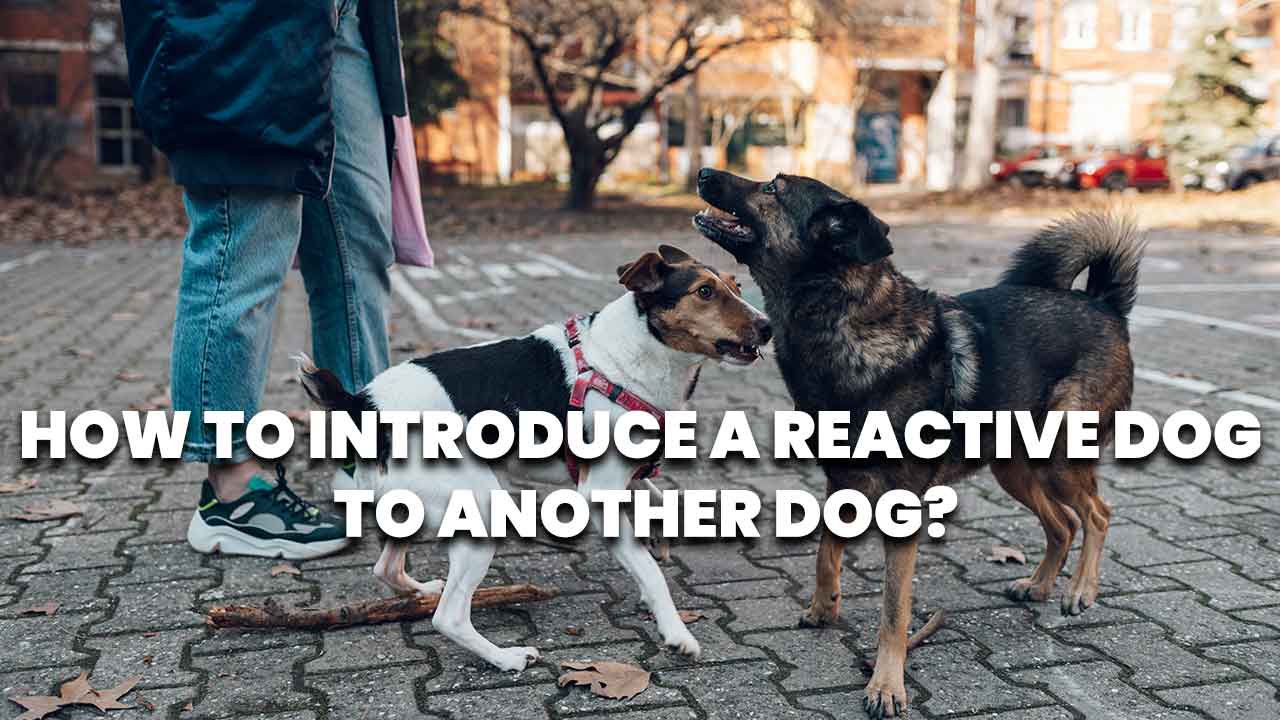What is IGP Dog Training: The Ultimate Guide
Key Takeaways:
- Understanding IGP: Discover the roots and significance of Internationale Gebrauchshunde Prüfungsordnung (IGP) dog training.
- Training Phases: Explore the three essential components – tracking, obedience, and protection.
- Breed Suitability: Learn which breeds excel in IGP and why.
- Training Essentials: Essential tips and techniques for successful IGP dog training.
- Benefits of IGP: Understand how IGP shapes a disciplined and well-rounded canine.
IGP dog training, previously known as IPO (Internationale Prüfungs-Ordnung) and commonly referred to as Schutzhund, stands as a testament to a dog's versatility and capabilities in tracking, obedience, and protection skills. Originally a breed suitability test for German Shepherds, IGP has evolved into an internationally recognized sport, open to all working breeds. This comprehensive guide delves into the intricacies of IGP dog training, highlighting its benefits and the profound bond it fosters between handler and dog.
Importance and Difficulty Ratings of IGP Dog Training Phases
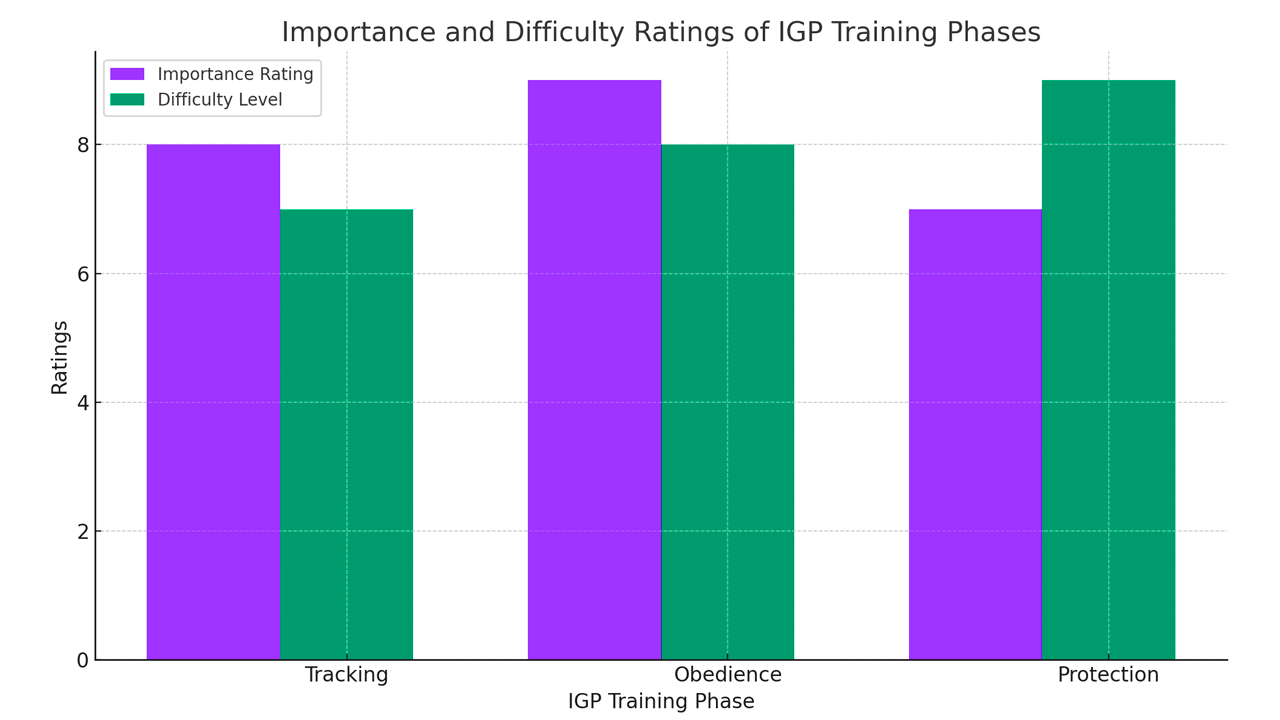
The chart above represents a hypothetical comparison of the importance and difficulty levels across the three phases of IGP dog training: Tracking, Obedience, and Protection. Each phase is rated on its importance and difficulty on a scale from 1 to 10. This visualization can help in understanding which areas might require more focus during training and which are deemed more crucial for a dog's development in IGP dog training.
The Essence of IGP Training
IGP training is split into three distinct phases:
- Tracking: Testing a dog's ability to follow a scent trail and locate objects.
- Obedience: Assessing the dog's discipline, following commands amidst distractions.
- Protection: Evaluating controlled aggression and defense skills.
Suitable Breeds for IGP
While initially designed for German Shepherds, IGP dog training is now embraced by various working breeds due to their intelligence, agility, and instinctual prowess. Breeds like the Belgian Malinois, Rottweiler, and Doberman excel in these trials, showcasing their remarkable capabilities.
Training Fundamentals
IGP dog training demands consistency, patience, and an understanding of canine psychology. The key lies in positive reinforcement and trust-building exercises. It's not merely about training a dog; it's about cultivating a relationship where respect and understanding are mutual.
The Benefits of IGP Dog Training
IGP training transcends typical obedience routines. It molds a disciplined, well-rounded, and focused canine. Moreover, it enhances the dog’s natural abilities, making them more adaptable and responsive in various situations.
For more insights into specialized training methods, explore our article on how to train a Dogo Argentino, a breed known for its intelligence and strength, or delve into the world of service animals with our guide on how to train dogs as service animals.
Integrating IGP into Your Training Routine
Implementing IGP dog training into your routine requires a structured approach and an understanding of your dog's strengths and limitations. Begin with basic obedience training, gradually introducing the more complex aspects of tracking and protection.
Mastering the Art of Tracking in IGP
The first phase of IGP dog training, tracking, is about honing a dog's natural scenting abilities. This phase involves teaching your dog to follow a trail and identify specific objects. To excel in tracking, the dog must demonstrate focus, determination, and a keen sense of smell. Begin with simple exercises, gradually increasing complexity, and always encourage your dog with rewards and positive reinforcement.
Obedience: The Backbone of IGP Training
Obedience in IGP goes beyond basic commands. It includes performing tasks with precision under varying degrees of distraction. This phase tests not just the dog's training but also the handler's ability to command and control their canine companion. Key aspects include heelwork, retrieving, and responding to commands at a distance.
For those interested in furthering their dog's obedience training, our guide on how to train a dog to ignore distractions offers practical tips and techniques.
The Protection Phase: Controlled Courage
Protection work in IGP is often misunderstood. It's not about aggression but controlled response. In this phase, dogs are trained to protect on command and, more importantly, to cease on command. This training ensures the dog behaves responsibly, showcasing both courage and restraint.
Those looking to specialize further might consider exploring our resources on personal protection dog training, offering insights into developing a dog's protective instincts responsibly.
IGP Training: A Path to Service and Working Roles
IGP-trained dogs are not just limited to sports; they often find roles in various service and working capacities. The discipline and skills acquired through IGP make these dogs ideal candidates for roles in law enforcement, search and rescue, and personal protection.
Discover more about training dogs for specialized roles in our articles on training a gluten detection dog and how to scent train a service dog.
Behavioral Benefits of IGP Training
IGP dog training is not just about physical skills; it has a profound impact on a dog's behavior. This comprehensive training method enhances a dog's focus, increases impulse control, and builds confidence. Dogs that undergo IGP dog training tend to be more balanced, responsive, and mentally stimulated, making them well-adjusted companions.
IGP and Modern Canine Roles
The evolution of IGP training reflects the changing roles of dogs in society. From being primarily working animals, dogs have transitioned to multifaceted roles, including therapy, assistance, and companionship. IGP training equips dogs with the versatility needed to adapt to these diverse roles effectively.
For a deeper understanding of training dogs for modern roles, consider reading about how to train a rabbit dog or how to train a squirrel dog effortlessly.
Integrating IGP Training with Other Disciplines
Combining IGP training with other canine disciplines can enhance a dog's abilities. For example, integrating scent training or agility with IGP can create a more versatile and adaptable canine. This holistic approach to training can open up new avenues for both the dog and the handler.
To explore additional training methods, our guide on how to become a dog trainer in Missouri provides valuable insights for those aspiring to train dogs professionally.
The Cost of IGP Training
Investing in IGP training can be both time-consuming and financially demanding. However, the benefits it brings to both the dog and the owner are immeasurable. Understanding the costs involved can help in making informed decisions about pursuing this training path.
For cost-related queries, check out our articles on dog protection training costs, the cost of training a hunting dog, and how much K9 dog training costs.
The Role of the Handler in IGP Training
A successful IGP training journey hinges significantly on the handler's skill, patience, and understanding of canine psychology. The handler must not only instruct but also inspire trust and respect in their dog. This bond is crucial for achieving the high levels of discipline and precision required in IGP.
Tips for Successful IGP Training
- Consistency and Patience: Regular training sessions and a patient approach are key.
- Positive Reinforcement: Reward desired behaviors to encourage repetition.
- Customized Training: Adapt training methods to suit your dog’s unique personality and learning style.
- Professional Guidance: Consider seeking advice from experienced IGP trainers, especially when starting out.
For those aspiring to become professional trainers, our article on how to become a personal protection dog trainer offers valuable insights into the world of specialized dog training.
Navigating the Challenges of IGP Training
IGP training can be demanding for both the dog and the handler. It requires a significant time commitment and a deep understanding of your dog's capabilities and limits. Being aware of these challenges and preparing for them can make the training process smoother and more rewarding.
IGP Training in the Digital Age
With the advent of online resources and virtual training platforms, accessing IGP training information has become more convenient. Online forums, training videos, and digital courses can supplement hands-on training and provide valuable support to handlers at all levels.
For a comprehensive look at the digital aspect of dog training, our guide on how to train dogs as service animals provides insights into modern training techniques and resources.
Conclusion: The Journey of IGP Dog Training
IGP dog training stands as a pinnacle of canine discipline, showcasing the remarkable capabilities of dogs when guided by skilled and dedicated handlers. This training journey is about more than just titles and competitions; it's about building a profound bond with your dog and unlocking their full potential.
Final Thoughts on IGP Dog Training
- A Lifelong Commitment: IGP training is a continuous process that evolves with your dog.
- Mutual Growth: Both handler and dog grow together, learning from each other throughout the training journey.
- Beyond the Sport: The skills and discipline acquired in IGP training extend to all aspects of life with your dog, making them more adaptable, obedient, and reliable.
Further Reading and Resources
For those keen on exploring more about dog training, our website offers a wealth of information. From understanding the costs involved in dog protection training to learning about the nuances of training specific breeds like the Dogo Argentino, there's something for everyone.
Invitation to Explore Further
IGP dog training is a rich and complex field, full of data and insights that can be fascinating to explore. If you're interested in delving deeper into the world of IGP training through data visualization, let us know.
Resources
- Cesar's Way: This is the official website of the world-renowned dog behaviorist Cesar Millan. It serves as a valuable resource for dog training and owner advice, covering a wide range of topics from basic obedience to dog psychology.
- American Kennel Club (AKC): The AKC provides online dog training courses and a wealth of information on how to train dogs at home. Their website offers guidance on various training aspects including obedience, agility, and behavioral adjustments.


